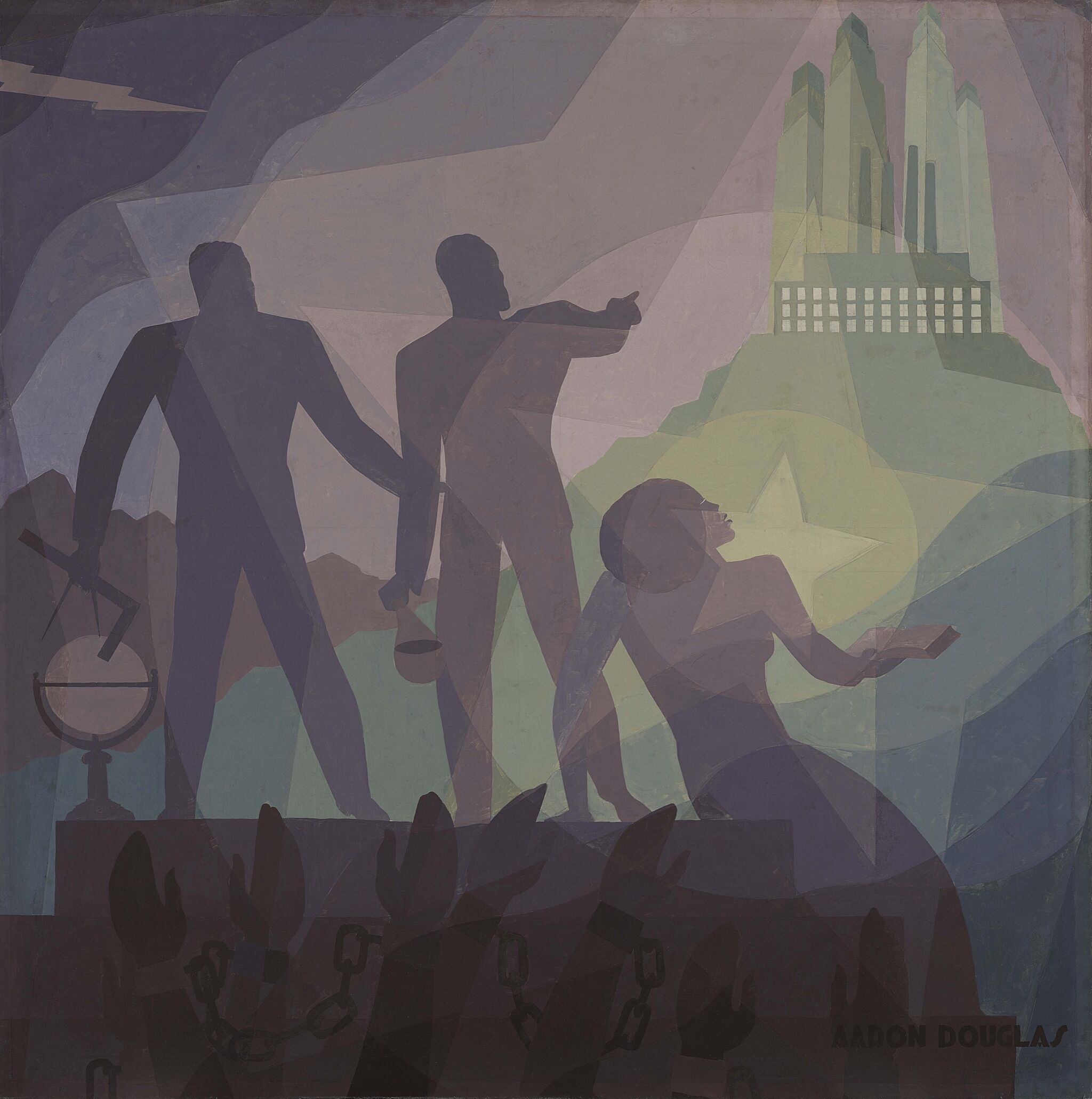Vida Americana: Mexican Muralists Remake American Art, 1925–1945
Feb 17, 2020–Jan 31, 2021
Epic Histories
4
The economic meltdown that followed the 1929 crash of the U.S. stock market shattered the country’s faith in itself and its future. Guided by the Mexican muralists’ creation of unifying national myths rooted in the struggles and triumphs of ordinary citizens, artists in the United States remodeled elements of national history and everyday life into epics of strength and endurance in an effort to help the country revitalize itself.
Black American painters such as Aaron Douglas, Charles White, and Hale Woodruff found inspiration in the muralists’ celebration of the Mexican people’s fight for emancipation from the tyranny of autocratic rule. In constructing redemptive narratives of social justice out of their own history of oppression, resistance, and liberation, these artists transformed that history into a new collective identity, one that foregrounded the contributions of Black Americans to national life. Thomas Hart Benton likewise celebrated the Mexican muralists. Hailing them as a powerful countervailing force to “elite” modes of European abstraction, Benton urged his fellow artists to follow their example of using a modern visual vocabulary to speak directly to the public about socially relevant issues. Although from a contemporary perspective Benton’s critical history of the United States often relies problematically on ethnic and racial stereotypes of Black and Native Americans, his goal was to invoke the nation’s past in order to create a shared vision of the future.
Artists
- Charles Henry Alston
- Ramón Alva Guadarrama
- Lola Álvarez Bravo
- Luis Arenal
- Belle Baranceanu
- Will Barnet
- Carleton Beals
- Thomas Hart Benton
- Henry Bernstein
- Emil Bisttram
- Julius Bloch
- Lucienne Bloch
- Anita Brenner
- Jacob Burck
- Elizabeth Catlett
- Stuart Chase
- Howard Cook
- Miguel Covarrubias
- Aaron Douglas
- Sergei Eisenstein
- Jesús Escobedo
- Philip Evergood
- Seymour Fogel
- Ford Motor Company
- Hugo Gellert
- Xavier Gonzalez
- Marion Greenwood
- William Gropper
- Philip Guston
- Eitarō Ishigaki
- María Izquierdo
- Everett Gee Jackson
- Joe Jones
- Frida Kahlo
- Jacob Lawrence
- Harold Lehman
- Michael Lenson
- Mardonio Magaña
- Bendor Mark
- Fletcher Martin
- Leopoldo Méndez
- Carlos Mérida
- Edward Millman
- Tina Modotti
- Roberto Montenegro
- Emilio Gómez Muriel
- Hideo Benjamin Noda
- José Clemente Orozco
- Jackson Pollock
- Alfredo Ramos Martínez
- Anton Refregier
- Diego Rivera
- Ben Shahn
- Henrietta Shore
- Mitchell Siporin
- David Alfaro Siqueiros
- Harry Sternberg
- Paul Strand
- Thelma Johnson Streat
- Rufino Tamayo
- Edward Weston
- Charles White
- Hale Aspacio Woodruff

